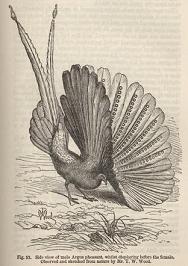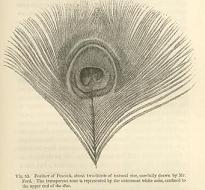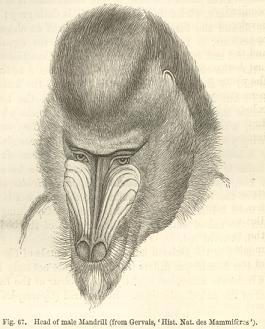
In order to leave an evolutionary legacy survival is not enough. Individuals must also reproduce. Over 90% of species reproduce sexually, meaning two individuals from each sex must mate in order to produce offspring. Reproduction is expensive and can exert an additional evolutionary pressure. Darwin defined this pressure as sexual selection. Sexual selection operates through some members of a species having an advantage over others in terms of mating. It is the selection for traits that are solely concerned with increasing the mating success of an individual.
Darwin And Sexual Selection
Darwin’s findings in relation to sexual selection were published in his book The Descent of Man and Selection in Relation to Sex in 1871. Darwin observed that there are some characteristics that do not appear to help an organism adapt to its environment and are thus not explained by natural selection. He suggested that they feature in the process of sexual selection. He defined the process by saying that it ‘depends on the advantage which certain individuals have over other individuals of the same sex and species, in exclusive relation to reproduction’. His observations and analysis lead to the reasoning that sexual selection works in two main ways: either through competition among members of one sex for access to members of the other sex (combat) or through choice by members of one sex for certain members of the other sex (display).
Combat
In terms of combat, males within a species compete with each other for access to the females. This leads to larger and stronger males and to the development of male ‘weapons’ in order to give them the advantage when in combat with other males. Darwin referred to many examples of this. Elephant seals and walruses are examples of the increased size and strength of males. Elephant seals annually migrate from their foraging ground to their breeding ground. The males arrive roughly two weeks before the females and they then fight to gain the best breeding site and thus attract the most females. Only the largest and strongest males are able to dominate in this competition. Roughly 90% of males end up pup-less! Examples of male ‘weapons’ include the horns of male beetles, the antlers of stags, the large canine teeth of male baboons and the tusks of male wild boar. In addition, male competition can also be more subtle. For example, when some male insects mate with a female they remove the sperm that is already present in the female as it is from previous males.

Display
‘Display’ refers to the exhibition of ornate male features to potential female mates, such as the striking, brightly coloured plumage of many male birds. Darwin suggested that this process of selection operates through female choice, whereby females choose the most striking males to mate with. This theory proposes that male ornaments are thought to be a genuine indication of the male’s vitality. The presence of a costly ornament on a male tells the female that he is genetically exceptionally healthy and thus her offspring will inherit his vitality.

A classic example, and one used by Darwin, is the flamboyant tail of the peacock. It appears to serve no purpose in terms of survival and may actually be a handicap - a disadvantage in terms of survival for existence - as the tail makes it more difficult for the bird to escape from predators. The explanation in terms of sexual selection for its presence is that peahens are attracted to it, and there are various suggestions as to why they like it. Generally sexually selected traits either signal fitness directly, as their development depends on good health or a good diet, or indirectly when they signal the ability of the male to survive despite the large cost imposed by the fancy plumage or what have you.

Darwin proposed that this process of sexual selection would work in the following way. In the past when peacocks had ordinary colour and length tails, peahens (for some reason) showed a preference to mate with males with slightly longer and more flamboyant than average tails. Thus, the characteristic of slightly longer, more brightly coloured tails would be passed on to the next generation and over many generations the peacocks' tails would become longer and brighter. Thus, the ornate tail gives such an advantage in terms of mating success that it is selected for despite being a disadvantage in terms of general survival. Darwin thus argued that these flamboyant male characteristics were not, as believed at the time, due to a designer who had an aesthetic sense, but due to the need to attract a mate. Other examples where males are more striking than the females are found in fish, lizards and spiders.
Sexual Selection In Man
In the final chapter ofThe Descent of Man and Selection in Relation to Sex, Darwin discuses sexual selection in man. He states that any deliberate mate selection is of women by men, not the other way around. Therefore, it is female features that are important in mating success, such as beauty, red lips, shapely breasts, as well as artificial means such as jewellery and make up. Darwin also identified that different cultures have different views on human attractiveness.

Darwin’s Evidence For Sexual Selection
Darwin’s main evidence for sexual selection was the fact that he found, from a comparison of a great number of species, that there is a greater difference between the sexes (greater sexual dimorphism) in polygynous species than monogamous. A polygynous species is a species where one male mates with several females, whereas in monogamous species a single male pairs with a single female. Darwin reasoned that in polygynous species secondary sexual characters will be more developed to enable the males to gain access to more females (via combat or display). Therefore, polygynous species should, and were indeed found to, have greater sexual dimorphism.
Darwin also carried out various experiments to test sexual selection. These included plucking game cocks’ tail feathers, cutting the “eyes” out of a peacock’s tail and shortening or artificially enhancing tail length and then, in each case, testing the effect on mating success.
Written by Emily Brown
References & Further Reading
Darwin
by John van Wyhe, Andre Deutsch: 2009
Darwin
by Adrian Desmond & James Moore, Penguin: 1991
Darwin: Discovering the Tree of Life
by Niles Eldredge, WW Norton & Co.: 2005
The Descent of Man, and Selection in Relation to Sex (Vol I & II)
by Charles Darwin, 1871 (any edition)
Dr.Tatiana's Sex Advice to All Creation: Definitive Guide to the Evolutionary Biology of Sex
by Olivia Judson, Vintage: 2003
On the Origin of Species
by Charles Darwin, 1859 (any reprint - 2nd edition preferable)
Evolution
by Carl Zimmer, Arrow: 2003
Evolution
by Mark Ridley, Wiley Blackwell: 2003
One Long Argument
by Ernst Mayr, Allen Lane: 1991
What Evolution Is
by Ernst Mayr, Phoenix: 2002
Why Evolution is True
by Jerry Coyne, OUP: 2009